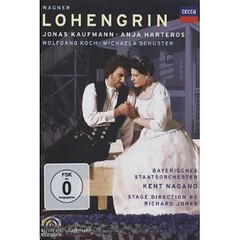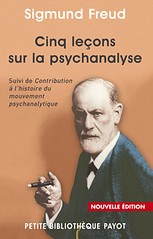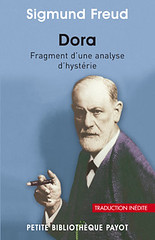
Ópera, ópera, ópera, ópera, cinema, música, delírios psicanalíticos, crítica, literatura, revistas de imprensa, Paris, New-York, Florença, sapatos, GIORGIO ARMANI, possidonices...
segunda-feira, 30 de agosto de 2010
domingo, 29 de agosto de 2010
Cheap & Chic

Salzburgo 2010 apaga-se, enquanto Salzburgo 1962 – via Beethoven – vem ao encontro deste escriba! Quando Maomé não vai à montanha...
Por artes da casualidade, recentemente, desloquei-me a uma zona de Lisboa pela qual não nutro particular simpatia, o Parque das Nações. Por ocasião da Expo’98, já formado e ainda desempregado, contrafeito, Il Dissoluto Punito labutou no Pavilhão de Portugal. Desde então, a aversão à zona oriental da capital foi crescendo, adensando-se.
Cumprida a missão que me levara à mencionada zona, resolvi dar uma saltada à FNAC local... Digamos que encontrei um motivo de regozijo: o Fidelio de Von Karajan, captado ao vivo em Salzburgo, em 1962, por escassos €12!!!
Quanto aos (eventuais) demais pontos de interesse da distribuidora monopolista, NADA! Um loja digna de um arrabalde, com lacunas inadmissíveis, mal organizada e servida por gente pouco qualificada.
(DONNA) Elvira Machaidze

Der Ring, d'après Robert Lepage...

Ópera em dvd - Planeta Agostini

As edições PLANETA AGOSTINI estão a comercializar um conjunto produções de óperas célebres, em DVD. Por ora, apenas conseguimos levantar a ponta do véu, vislumbrando-se produtos muito apetecíveis, e justamente famosos.
Contudo, recomendo a máxima prudência, pois, por ocasião da última comercialização deste tipo de produtos (via Altaya), tive surpresas muito desagradáveis, no tocante à qualidade das gravações.
Os logros sucederam-se!
Como diz o povo, sabiamente «Quando a esmola é grande, o pobre desconfia»
sábado, 28 de agosto de 2010
quarta-feira, 25 de agosto de 2010
The Southerner

domingo, 22 de agosto de 2010
quinta-feira, 19 de agosto de 2010
quarta-feira, 18 de agosto de 2010
Últimas aquisições ossia Habemus Chaliapin!!!
domingo, 15 de agosto de 2010
Deus no céu...

sexta-feira, 13 de agosto de 2010
quarta-feira, 11 de agosto de 2010
terça-feira, 10 de agosto de 2010
La Simionato (1910 - 2010)

Mais vale tarde que nunca, lá diz o povo sábio!
A grande Giulietta Simionato juntou-se aos eternos há uns bons meses. Só agora este blogger lhe presta uma justíssima homenagem. Em boa verdade, apesar da inequívoca qualidade desta intérprete, nunca a grande senhora inundou esta alma, como as conterrâneas Cossotto, Stignani e Barbieri. Será um problema meu, seguramente. Gostos, enfim…
Em todo o caso, é de salientar a mestria de Giulietta Simionato, particularmente no belcanto, onde ladeou – triunfando! – a grande amiga e colega, Maria Callas. À côté, merecem, de igual modo, referências as suas recriações rossinianas e verdianas.
Paz à sua alma.
«Giulietta Simionato, who has died aged 99, was one of the greatest Italian opera singers of her generation. She was a beautiful woman and a vivid actor. Like her great friend Maria Callas, with whom she sang often, Simionato had the ability to invest whatever she was singing with an individual quality. Her voice was not as powerful as that of some of the other famous Italian contraltos and mezzos, but it was immediately recognisable. She was able to deliver each word and phrase with a rich palette of colours, and to use the characteristic rapid vibrato to sing a wide range of parts.
Although Simionato's career was long, and her repertory stretched from Monteverdi, Cimarosa and Handel to Bartók, Honegger and Strauss, it will be for her performances in the operas of Rossini, Bellini, Donizetti and Verdi that she will be remembered. As well as her bel canto specialities, she sang Santuzza in Cavalleria Rusticana, the title role in Carmen, and the classic Verdi mezzo roles: Eboli in Don Carlos, Azucena in Il Trovatore, Amneris in Aida (her Covent Garden debut, under Sir John Barbirolli, with Callas as Aida and Joan Sutherland as the Priestess, in 1953), as well as the comic Mistress Quickly in Falstaff and the swaggering Preziosilla in La Forza del Destino.
She was born in Forlì, in the Emilia-Romagna region of northern Italy. She spent her early childhood in Sardinia and, at the age of eight, moved with her family to Rovigo, near Venice, where her musical and vocal skills were noticed immediately. She studied with Ettore Locatello and Guido Palumbo. "I would kill my daughter with my own hands rather than see her become a singer," said her mother, who ruled the family with cruel punishments and rages. In 1925, her mother died and Simionato resumed singing, making her stage debut in 1927 in Rossato's Nina, Non far la Stupida.
While still a student, she made her professional debut in the role of Maddalena in Rigoletto, and in 1933 she was one of the winners of a singing competition in Florence. Among the judges were the conductor Tullio Serafin and the veteran soprano Rosina Storchio (the first Madama Butterfly), who told her: "Always sing like this, dear one."
Although Simionato's talents were quickly noticed, her career was almost entirely in small roles throughout the remainder of the 1930s. She joined La Scala in Milan in 1936 and would make appearances there for the next 30 years.
Simionato married the violinist Renato Carenzio in 1940, and it was not until after the second world war that her career took off. She was 35 when she sang Dorabella in Così Fan Tutte in Geneva in October 1945. Her success was tremendous. She repeated the role in Paris the following year and was Cherubino in Figaro with the Glyndebourne company at the first Edinburgh festival in 1947.
Simionato sang the title role in Ambroise Thomas's Mignon, in October 1947, opposite the young Giuseppe di Stefano as Wilhelm Meister. The role of Mignon became especially associated with Simionato, who identified with the put-upon street-singer. It was the part in which she made her debut at La Fenice in Venice in 1948, and the following year in Mexico, where she became a great favourite.
During the 1948-49 seasons, she began to sing the Rossini, Bellini and Donizetti roles in which she became a specialist as the bel canto revival got under way. Leonora in Donizetti's La Favorita, the title roles in Rossini's La Cenerentola and L'Italiana in Algeri, Romeo in Bellini's I Capuleti e i Montecchi and Adalgisa in Bellini's Norma all became Simionato parts. She first sang Adalgisa to Callas's Norma in Mexico in 1950.
During the 1950s, she established a strong link with the Salzburg festival, where she often sang with Herbert von Karajan and the Vienna State Opera. Perhaps the most memorable of their collaborations was Karajan's production of Gluck's Orfeo ed Euridice, designed by Caspar Neher, in 1959. The nobility and restraint of Simionato's performance is preserved on a recording.
After the failure of her marriage in the late 1940s, and a liaison with a much younger singer, in the 1950s she fell in love with the distinguished physician Cesare Frugoni, who was nearly 30 years older than her. Both were married, and under Italian law unable to obtain divorces, so their relationship remained discreet.
During the later part of Simionato's stage career, she enjoyed a special triumph in the first performance at La Scala of Berlioz's Les Troyens in 1960. In the summer of 1962 she sang Neris to Callas's Medea for the last time, when Callas made her final La Scala appearances.
She created the role of Pirene in the world premiere of Falla's Atlántida ("too static and untheatrical," Simionato called it) the same year. One of her last appearances was at Covent Garden in 1964 as Azucena in Visconti's production of Il Trovatore. She made a round of quiet farewells, singing Adalgisa to Callas's Norma in Paris in 1965, and then took on the relatively small part of Servilia in Mozart's La Clemenza di Tito at La Piccola Scala in January 1966. Simionato retired that year. She married Frugoni after the death of his first wife, and they enjoyed 12 years of marriage until he died in 1978.
An elegant, social figure, Simionato was in later years an occasional judge of singing competitions. She sang Cherubino's aria, Voi che sapete, from The Marriage of Figaro, at a tribute to Karl Böhm at the Salzburg festival in 1979. In 1995, she celebrated her 85th birthday at La Scala.
Her third husband, the industrialist Florio De Angeli, died in 1996.»
«In the United States, Ms. Simionato was most closely associated with the Lyric Opera of Chicago . In her six seasons there, her roles included Cherubino in Mozart’s “Marriage of Figaro,” Azucena in Verdi’s “Trovatore” and the title role in Bizet’s “Carmen.”
In New York, Ms. Simionato sang 28 performances with the Metropolitan Opera between 1959 and 1965. She made her debut there as Azucena, opposite Antonietta Stella, Carlo Bergonzi and Leonard Warren. Reviewing the performance in The New York Times, Howard Taubman wrote:
“The Italian mezzo-soprano brings a rich, secure and cultivated voice to the Met. Her range is formidable; the high tones have accuracy and brilliance, and the low are firm and vibrant. She sings with stirring ardor and moves with intelligence.”»
segunda-feira, 9 de agosto de 2010
Disse-me um passarinho...

Anthony Rolfe Johnson (1940 - 2010)

(Anthony Rolfe Johnson)
Há muito que Sir Rolfe Johnson se encontrava afastado dos palcos. Padecia de uma enfermidade crónica, afim com a demência. Chegou a sua hora, sem que o próprio disso se apercebesse…
Rolfe Johnson deve permanecer nas nossas memórias como O tenor mozartiano dos anos 1990. Travei conhecimento com ele via Gardiner, que o adorava. Com este grande maestro britânico, Rolfe Johnson interpretou Monteverdi, Bach e Handel, para além de uma óptima La Clemenza di Tito, a par de um excelente Idomeneo.
Paz à sua alma.
«Anthony Rolfe Johnson, an Englishman who began his professional life as a farmer and ended it as a distinguished lyric tenor who had performed to glowing notices in the world’s most storied opera houses and concert halls, died on July 21 in London. He was 69.
The death was announced on the Web site of his management company, Askonas Holt. As was widely reported in the British press, Mr. Rolfe Johnson had been ill with Alzheimer’s disease in recent years.
Mr. Rolfe Johnson, who did not begin formal training until he was nearly 30, eventually sang leading roles on opera stages including those of Covent Garden in London, the Paris Opera and the Metropolitan Opera, where he appeared 20 times in the 1990s.
He recorded widely and was a soloist with major orchestras, including the Chicago and Boston Symphonies and the New York Philharmonic.
Critics praised his tonal beauty, vocal flexibility and interpretive sensitivity, as well as his ability to inhabit seemingly any period in a 400-year swath of musical literature. Though Mr. Rolfe Johnson was most closely identified with early-music composers, including Monteverdi, Bach and Handel, his portfolio ranged through Haydn, Mozart, Schubert and on to modernity.
In 20th-century music, he was especially renowned for his Peter Grimes, the tortured fisherman at the heart of Benjamin Britten’s opera of that name. He sang the role many times, including, in 1994, at the Met.
Anthony Rolfe Johnson was born on Nov. 5, 1940, in the Oxfordshire village of Tackley; as a boy he sang in his church choir. By the time he was a teenager, however, he had decided to study agriculture and spent most of his 20s farming in Sussex.
In his late 20s, seeking a hobby, he joined a local choir. On hearing him, a fellow chorister sent him to sing before a prominent voice teacher in London. There — and by all accounts to his immense astonishment — Mr. Rolfe Johnson was told that properly trained, he stood to become a world-class singer.
Before long, he had enrolled in the Guildhall School of Music and Drama in London. He found himself years behind his classmates, unable even to read music. He soon learned, and eventually studied privately with the distinguished English tenor Peter Pears, Britten’s life partner.
Mr. Rolfe Johnson made his operatic debut in 1973 with the English Opera Group, singing Count Vaudémont in Tchaikovsky’s opera “Iolanta.” Other notable roles over the years include Aschenbach, the lead in Britten’s “Death in Venice,” which he sang at the Met in 1994.
He had made his Met debut three years earlier in the title role of Mozart’s “Idomeneo,” substituting for Luciano Pavarotti, who had withdrawn because of a schedule conflict.
Reviewing the debut in The New York Times, Edward Rothstein called Mr. Rolfe Johnson’s voice “both well placed and well tempered,” adding, “His musicianship gave him authority.”
Also known as an oratorio singer, Mr. Rolfe Johnson recorded Bach’s two Passions, the St. John and the St. Matthew, for the Archiv label, singing the role of the Evangelist in each.
Mr. Rolfe Johnson was twice divorced. Survivors include his wife, Liz; their three children; and two children from his first marriage.
In 1992, he was made a Commander of the British Empire.»
Bayreuth IV - (ainda o) Lohengrin (de Neuenfels)



(Lohengrin, Bayreuth, 2010. Kaufmann, em primeiro plano - foto de cima - e demais elenco)
Nestas coisas de criticar encenações, todos ganhamos com o olhar ponderado, distante, sensível e avesso a preconceitos (e sobrancerias) dos americanos. Esta notável leitura da nova produção de Lohengrin de Bayreuth, cuja polémica mise-en-scène de Neuenfelts tem gerado tanto mal-estar, coloca a coisa no seu lugar: há incongruências múltiplas no trabalho do encenador, a par de uma indiscutível riqueza simbólica.
Há muito que Bayreuth se tornou num espaço de ousadia – por vezes decrépita. Recordar-se-á o leitor, ainda, do Parsifal de Herheim???
Quem procura consensos e encenações comme il faut, pode bem lambuzar-se com as poeirentas propostas de Zeffirelli!
Não sendo eu um fã de Mortier – tido com o derradeiro vanguardista -, partilho da ousadia que introduziu em Salzburgo. Agora é a vez de Bayreuth… pós W. Wagner!
«BAYREUTH, Germany — It has become practically a part of the tradition at the Bayreuth Festival for the director of an avant-garde Wagner production to be vociferously booed on opening night. So it was on July 25, when the festival opened with the new Hans Neuenfels production of “Lohengrin,” which I saw here on Tuesday, the second performance.
If regie-opera (productions driven by a director with an imposing agenda) has a ringleader, it is probably Mr. Neuenfels, especially notorious for a 2001 “Fledermaus” at the Salzburg Festival that turned this frothy, waltzing comedy into a festering exposé of kinky sex and proto-Nazism.
What is mostly inciting the ire over Mr. Neuenfels’s “Lohengrin,” with sets and costumes by Reinhard von der Thannen, is his depiction of the nobles and commoners of 10th-century Brabant as rats in a sterile modern-day laboratory. Only the main characters — the Christian knight Lohengrin, the fair lady Elsa, King Henry the Fowler of Germany, the conniving Count Friedrich von Telramund and his wife, Ortrud, who practices the occult — are presented as fully human and, consequently, superior.
The concept is laden with symbolism, and Mr. Neuenfels’s presence as a director-commentator pervaded every scene. Yet provocative and insightful ideas fire this intriguing staging. And, as always at Bayreuth, the production values are so high that every set, costume and prop looked great.
What mattered most, of course, was the overall, and exceptionally strong, musical performance. In his debut role at Bayreuth, the German tenor Jonas Kaufmann was a magnificent Lohengrin. He looked the part of an earnest, pensive and dazzling young knight, come to defend Elsa against falsehoods and marry her. The fast-rising 31-year-old Latvian conductor Andris Nelsons, the music director of the City of Birmingham Symphony Orchestra in England, also making his Bayreuth debut, drew a glowing, supple and richly detailed performance from the festival orchestra. During the prelude to Act I, the penetrating warmth of the soft strings in this acoustically miraculous house, designed by Wagner, was spellbinding.
In an interview for the program book Mr. Neuenfels says that Wagner’s music “thinks, and thinks grandly,” that this is music of “concepts.” The question is whether the music should be allowed to convey its concepts free of a director’s explicit ideological imagery.
During the prelude the house lights went up to reveal a white-walled room with metallic gates to the sides and a rear wall with eerie portals poking through. Mr. Kaufmann’s Lohengrin, his back to the audience, looking Christlike with his arms spread, put his shoulders to the task and slowly pushed the back wall into the rear of the stage: an effective and richly metaphorical touch.
But in the first scene, when King Henry, recruiting troops to fight the Hungarians in the east, calls an assembly of noblemen and the people of Brabant, the chorus appears dressed in gray, loose-fitting rat costumes, complete with long tails, floppy feet and see-through head masks, red eyes aglow.
We get it. The commoners and even the nobles are trapped in a society in which they have circumscribed roles to play and are used by the powerful. But could the same not be said of, say, Telramund, who is manipulated by his consort, Ortrud, or even, in a way, King Henry?
Elsa relates a dream she has had in which God sends a white knight to defend her. When that savior, Lohengrin, appears to rescue her from charges that she has murdered her noble brother, and a trial commences, the choristers remove their rat frocks for the duration of the scene. Men and women alike wear rich yellow suits and matching hats. So there are times when they are allowed to transcend their rat roles? I was not sure, though the choristers certainly looked wondrous in their striking yellow garments.
Still, fine music making drove this rich evening of Wagner. Mr. Kaufmann earned many fans at the Metropolitan Opera this spring with a one-two punch triumph: singing Cavaradossi in the new production of “Tosca” and Don José in the new production of “Carmen.” On Tuesday in Bayreuth he did not sound in his very best voice. Some pianissimo phrases were breathy, and he lacked a little of his trademark burnished power. Overall, though, he sang splendidly, with soaring phrases and earthy vocal colorings. His singing is an ideal balance of keen intelligence and vocal charisma.
When we first see the soprano Annette Dasch as Elsa, she is in a shining white coat pierced with arrows representing the false accusations that have been shot at her. Lohengrin plucks away the arrows. But Ms. Dasch conveyed Elsa’s wounded dignity so naturally that she did not need this lamely obvious metaphor. She was a touching Elsa who sang with warmth and pliant phrasing, but for a few strained high notes during some of the impassioned outbursts.
The soprano Evelyn Herlitzius brought hard-edged, sometimes wobbly vocal intensity to her vehement portrayal of Ortrud. The role need not be sung with such continuous ferocity. Still, Ms. Herlitzius was a maniacal force as Ortrud, and her top notes shook the house. The veteran Wagnerian baritone Hans-Joachim Ketelsen was a grave and fitful Telramund. The bass Georg Zeppenfeld as King Henry and the bass-baritone Samuel Youn as the Herald were excellent.
By Act III Mr. Neuenfels had worn down my resistance. As the citizens of Brabant sang the famous wedding march to Elsa and Lohengrin, the impressive Bayreuth choristers looked adorable lined up as rows of white rats, black rats and little pink kiddie rats, waving to the newlyweds, fidgety with excitement. Strange, I know. But oddly moving.
The production team did not take bows for this performance. The ovation for the cast, chorus and conductor went on for 20 minutes. This is the first Bayreuth festival presented under the new team of co-directors, Eva Wagner-Pasquier and Katharina Wagner, who are half-sisters and Richard Wagner’s great-granddaughters. Their father, Wolfgang Wagner, died at 90 this March after running the festival for more than 40 years. The new directors have announced their intention to make the festival less elitist and more approachable. It looks as if regie-opera, for better or worse, will continue to define productions here.»
domingo, 8 de agosto de 2010
Disse-me um passarinho...
Salzburgo II - Lulu & Petibon


Vera Nemirova, em Salzburgo, propõe uma Lulu (Berg) mais crua do que é hábito (?!). Contudo, a sua encenação parece conter tiradas muito originais e inventivas.
Pela parte que me toca, confesso que o maior interesse desta nova produção radica na prestação de Petibon, que ocupa o lugar de Schäfer como protagonista desta ópera.
Desde a estreia de Patrícia Petibon no papel titular – em Genéve, na temporada passada (aqui e aqui) – que se percebeu tratar-se d’A LULU DA DÉCADA!
Veremos. Por ora, o momento é de festa!
«SALZBURG, Austria — From the first minutes of the Salzburg Festival’s new production of Berg’s “Lulu,” which opened here on Sunday night at the Felsenreitschule, it was clear that musical matters were in very capable hands. The German conductor Marc Albrecht drew a consistently plush, urgent and taut performance from the Vienna Philharmonic.
In the prologue, as the baritone Thomas Johannes Mayer snarled and bellowed the words of the Animal Tamer, inviting the audience to witness a menagerie in which the principal attraction was the snake representing “woman’s original form and nature,” the orchestra reveled in Berg’s insinuating music for the bleakly comic scene: all abrupt phrases, jagged lines and bursts of astringent chords.
But Berg’s 12-tone score is also rich with wistful allusions to late-Romantic lyricism. Under Mr. Albrecht, the chief conductor-designate of both the Netherlands Opera and the Netherlands Philharmonic Orchestra, the Vienna musicians played Berg’s score as if it were a natural extension of Wagner, late Brahms and early Strauss — a completely valid approach. The warmth and body of the Vienna Philharmonic’s strings proved ideal for Berg’s unfinished final work (played here in the now standard three-act version, with the final act orchestrated by the composer Friedrich Cerha).
Still, the talk of any new production at the Salzburg Festival inevitably focuses on the staging. Well before opening night, predictions circulated in the opera world and on opera chat lines that this “Lulu,” by the Bulgarian director Vera Nemirova, was going to be another Eurotrash outrage.
Yet Ms. Nemirova’s daring and engrossing production earned her, and the production team, a sustained ovation. She has clearly worked closely with the German artist Daniel Richter, who designed the sets and painted some stunning flats. In Act I the backdrop is a huge blowup of a surreal portrait of the voluptuous Lulu, dressed only in underclothes and wearing incongruous angel wings, that the Painter is working on as the lights go up. And in Act II, when a cholera epidemic has broken out, the backdrop is a panorama of sickly, ghostly faces in garish reds and yellows that change color with the stage lighting.
That Ms. Nemirova is more than a purveyor of directorial high concept comes through in the minutely detailed characterizations she draws from her cast. The French soprano Patricia Petibon is a blithely amoral Lulu. When we meet her, she is married to Dr. Goll, a browbeaten professor of medicine.
As Lulu, she sometimes sang with a hard-edged sound and wavering high notes. Yet those qualities fit the character of this cagey seductress, who gets ahead by using the only power she has: her allure over men. Slender and sensual, she was riveting in every scene. And she nailed the skittish passagework of this high-lying role while summoning earthy rawness when Lulu was up against it and had to take charge, however ruthlessly.
The Painter was the tenor Pavol Breslik, and it was fascinating to see this character, usually an oily opportunist, presented as a handsome, cocky young artist. And as Dr. Schön, the editor of a newspaper, a controlling man who has supported, groomed and demanded sexual favors of Lulu for years, the baritone Michael Volle towered over Ms. Petibon and sang the role with menacing power.
All the characters were similarly fleshed out. Though the tenor Thomas Piffka has a big, robust voice, he was movingly befuddled as Alwa, Dr. Schön’s lost-soul son, hopelessly smitten with Lulu. The mezzo-soprano Tanja Ariane Baumgartner as the lesbian Countess Geschwitz, who adores Lulu, brought both pitiable longing and fragile dignity to her portrayal. And the bass-baritone Franz Grundheber as the old, shriveled Schigolch, who may be Lulu’s no-good father (or a former lover or an abusive stepfather; it is not clear), found endless ways to convey the character’s creepiness.
Ms. Nemirova’s staging was sometimes heavy-handed in its symbolism. Did we need to see seven agonized, blood-stained, shirtless men of various ages and body shapes crawling on the floor and clinging to Lulu to get that she is irresistibly sexual? On the other hand, the choreographed writhing was quite a sight.
For nearly the entire first scene of the final act, which takes place at a Paris soiree, Ms. Nemirova had the cast sing out in the auditorium, walking up and down the aisles with the house lights on. The singers, in over-the-top evening wear (thanks to Klaus Noack’s inventive costumes), passed out drinks and scattered gambling money (bills playfully marked 500 eros) to delighted audience members. The wily Marquis (the tenor Andreas Conrad) walked across the auditorium on a narrow wooden rail that divided two sections of seats.
This theatrical coup proved an effective setup for the harrowing final scene, in which Lulu, reduced to prostitution in London, is murdered by a pickup who turns out to be Jack the Ripper. I have never seen the climax staged with such matter-of-fact degradation.»
Salzburgo I - Gluck, Orfeo & Muti


(Elisabeth Kulman, como Orfeo, em Salzburgo)
Muti-vedeta brilha em Salzburgo, ofuscando tudo e todos: intérpretes, encenador and so on. Eis a crónica do Orfeo ed Euridice, de Gluck, d'après Riccardo Muti:
«Hasta cierto punto supone también una recuperación histórica la ópera Orfeo y Eurídice, de Gluck, que anteayer dirigió magistralmente Riccardo Muti después de más de medio siglo sin representarse en Salzburgo, entonces de la mano de Karajan. Bien es verdad que Gardiner había estado al frente de una versión concertante, con su orquesta y coro habituales, en 1990, pero para la escena, esta ópera estaba prácticamente desaparecida, después de una década como la de los treinta en la que Bruno Walter la había dirigido en 1931, 1932, 1933, 1936 y 1937, bien con la puesta en escena de Karl Heinz Martin o bien con la de Margarete Wallmann. De 1938 a 1944 fueron los años de influencia nazi. Únicamente Krips y Karajan la dirigirían hasta 1959 despues de la muerte de Hitler. Muti ha tomado el relevo.
La ópera de Gluck lleva asociada en la memoria colectiva el aria de Orfeo Che faró senza Eurídice?, que Elisabeth Kulman cantó con sensibilidad. Con el maestro Muti deberíamos señalar algo parecido: "¿Qué haríamos sin Muti?". La verdad es que el director napolitano se ha convertido en la estrella mediática del festival. Figura como el mejor director de orquesta en la encuesta anual de la revista Festspiele, por encima de Abbado y Thielemann; a comienzos del otoño afronta los conciertos inaugurales como director de la Sinfónica de Chicago; dirige el Festival de Pentecostés de Salzburgo, y se va a hacer cargo de la Ópera de Roma. Hace un par de décadas se le veía como el sucesor de Karajan en Salzburgo y en el camino se cruzó Mortier. Ahora los dos son buenos amigos. En la nueva producción de Orfeo y Eurídice, Muti estuvo colosal al frente de la Filarmónica de Viena. Los cantantes se mostraron tan correctos como distantes, el Coro de la Ópera de Viena realizó una prestación admirable y Dietern Dorn presentó una puesta en escena de una cursilería casi ofensiva, con una coreografía de Ramses Sigl tan pretenciosa como inoportuna.
Una parte del espectáculo estaba, en cualquier caso, en la sala. Aunque días antes se había representado la nueva ópera de Wolfgang Rihm, la presencia de Muti y la Filarmónica de Viena confería a la representación de Orfeo y Eurídice el ambiente de "verdadera" inauguración del festival. Era, cómo decirlo, la imagen del imperio de lo efímero, del poder económico, de la necesidad de ostentación en tiempos de crisis.»




























